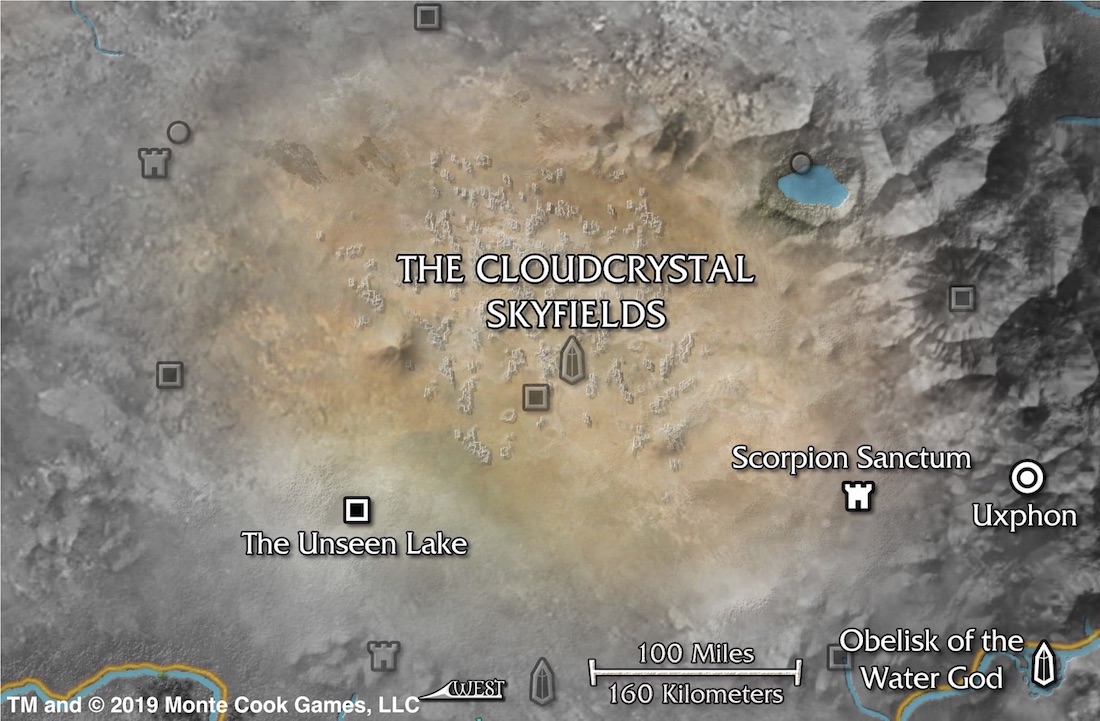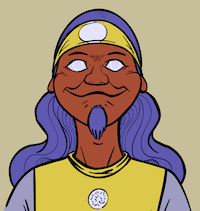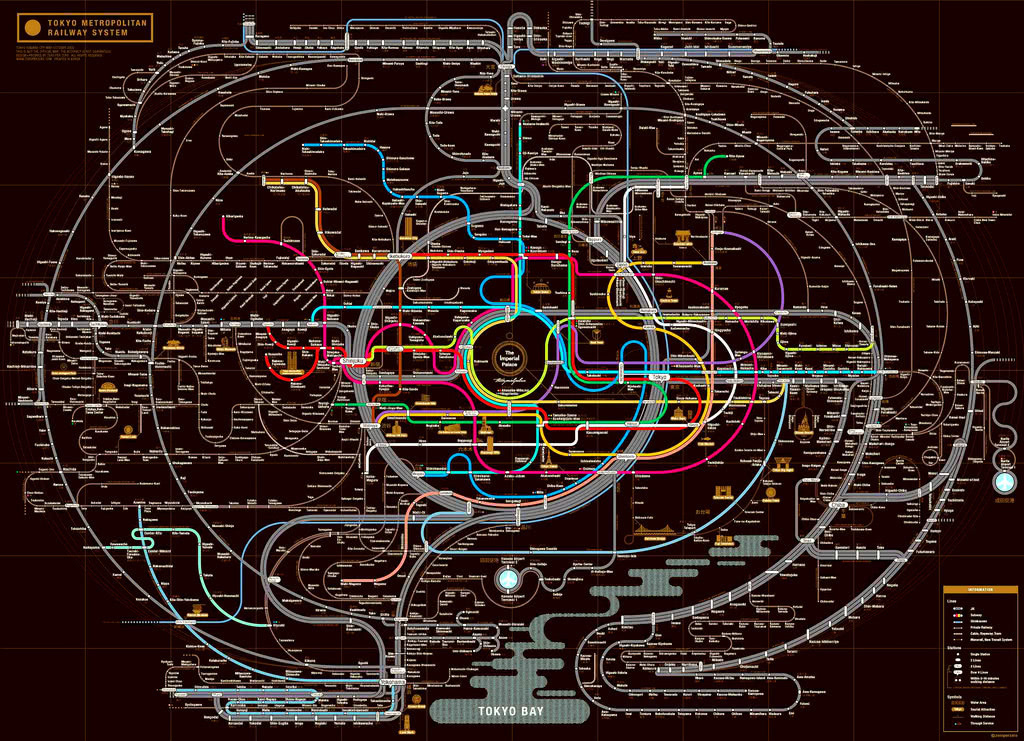In his latest post MrVekyl goes on point on pointcrawls and how to use them in Numenera.
I’ve been running a campaign using MCG’s Numenera setting for 2 years, and throughout, I’ve struggled with the scale of the world. The Ninth World is massive, with sub-region maps measured in hundreds of miles, the major points of interest thrown to the far ends of these regions. My ability to deal with this scale has gradually improved, but recently I stumbled across my answer for all of these concerns: the “pointcrawl”.
What’s a Pointcrawl?
Chris Kutalik of Hill Cantons fame is the person I see most frequently cited for breaking down and popularizing the idea of the pointcrawl. I highly recommend checking out his article Crawling Without Hexes: the Pointcrawl - it describes the core idea thoroughly. Essentially, a pointcrawl seeks to do the following:
- Break an area down into just its points of interest (POIs) and paths between those points
- Simplify travel between the POIs (typically via abstraction and encounter checks)
- Make exploration a driving force of the game and keep it meaningful by giving clear choices to the players
Chris’s version of the above goals is listed in the bottom of a follow-up article he wrote, Hexcrawls vs Pointcrawls. In fact, just go read his entire series on pointcrawling, it’s worth your time.
What Makes Numenera a Pointcrawl?
Not only is the world of Numenera an ideal setup for a pointcrawl, I’d argue that it’s actually the default play mode of the game, even if the books make no explicit mention of pointcrawling.

Take the world for example, but let’s focus on the “region” level of the map - think an individual country of the Steadfast, or a section of the Beyond. My group is currently about to head into the Cloudcrystal Skyfields, so I’ll use that as my example. In the books, a region is typically described within 3 or 4 pages of text, with short but evocative descriptions for the major points of interest (the named locations on the map). Some POIs aren’t placed on the map, and the GM is directed to put them wherever they’d like (there are several placeholder locations on each map for the GM to use as inspiration). Look at the scale - these POIs (including the placeholders) are typically separated by distances of ~100 miles or more. That’s far, especially considering that within the context of the game, most people have never ventured outside of their community and travel is considered to be dangerous even for the most prepared explorers.
Despite the large travel distances, discovery and exploration are the primary ways for PCs to gain experience (XP). Delving into unexplored ruins, uncovering long lost artifacts, and learning things about the world around you is literally how you advance your character. Weird locations and neighboring communities are where the game wants you to go, which is why the world comes stocked with so many of them. Of course, the books never actually tell you how you’re meant to get from point A to point B, or just how dangerous the areas between locations are, but pointcrawling solves these issues for us (which I’ll discuss later).
Additionally, Numenera Destiny recently introduced the concept of “long-term play,” activities that your players engage in over long periods of time, like starting a business or establishing relations with nearby communities. It also introduced Wrights, a new Type that focuses on crafting, which I’d argue is just another form of long-term play that they happen to be very good at. Pointcrawling is great for abstracting large distances and travel times, which fits in neatly with long-term play and greatly benefits Wrights who want to be constantly churning out cool crafting projects but don’t want to wait real-time weeks to complete them (this actually happened with my group, but that’s a story for another day).
To recap, we have a massive continent stocked with points of interest that are separated by large distances and “empty” space. Discovering things about the world is the primary way to gain XP and other rewards. Plus, crafting and other forms of long-term play benefit from the abstraction of time that comes with pointcrawling over large distances.
So, what sort of prep do you need to do to get this to your table? That’s the beautiful thing about the system - it is simplicity itself. You’re going to need a map with your major locations, paths between them, and an encounter table or two - that’s it.
Drawing the Map
Let’s make our map using the Cloudcrystal Skyfields. There are a handful of POIs listed on the map, some in adjacent regions - the Unseen Lake, Scorpion Sanctum, Uxphon, and the Obelisk of the Water God. Start there - draw squares for each POI, keeping their relative location and distances from other points the same as the map above. Now, are there any other locations relevant to your campaign that you want to add? Add them, again keeping in mind their relative distance from the other POIs. Personally, I want to mark out where the Black Riage mountains start and the general path of the Tithe River to the south. I also have some additional locations to add - the Timely Tide Inn (a non-military crossing point on the river) and Garom’s Outpost (where the PCs are headed).
Next, I know from reading the book that the Tithe is controlled by the country of Navarene and is dotted with military fortifications, so I’ll put a few Navrene Outposts along the south side of the water. I also want to put one more adventure site for the PCs to discover on the way to Garom’s, so I roll on a couple tables and come up with the Sand Castle, a shifting numenera ruin of red sand containing cybernetic augmentation chambers that is being used by the Aeon Priesthood to create batteries and other energy sources.
The last thing I need to do is mark out my major pathways. These won’t always be roads, sometimes these are just trails or areas of difficult terrain that you can cross to get from one site to another. Using the same format that Chris does in his pointcrawl maps, I use solid lines to denote normal terrain or well traveled paths, and dashed lines to show difficult terrain or disused trails. Travel between two points without a path marked out is always possible, but describe an in-game obstacle, hazard or mandatory encounter that the PCs will have to overcome if they decide to go off the beaten path. I add a few additional pathways to indicate other areas or POIs that are off the map, and we’re finished:

Encounter Checks and Tables
Alright, I lied - we’re not quite through. We still have to inject a little life into our pointcrawl via encounter checks. See those dots in the middle of each pathway? This is another trick I stole from Chris - those dots represent encounter checks. How many encounter checks to roll on each pathway depends on a few things: distance, travel speed, and personal preference. My players are riding in on the backs of hardy aneen, so they can get most places in a day or two, with only 1 encounter check called for on each leg of the journey.
This can be adapted for any mode of transport, remembering that the paths are abstracting distances of 100+ miles. If players are riding a far future hot rod, they might cover that distance in only a couple of hours with no encounter check called for. If they’re walking, it will likely take them 5+ days to get to their destination and multiple encounter checks will be needed. The farther away something is, the more time it takes and the more encounter checks occur. And it’s also up to you, the GM - what sort of pace do you want to set for the campaign or the session? You can even use GM intrusions at any point to introduce an encounter whenever it makes the most sense for the story.
The last thing I need is an encounter table. From the Cloudcrystal Skyfield section in the book, I learn about the Crowd City (a moving city made of dead bodies), the Garden of Jirzeem (a garden that I decide moves around like the City), and d’Ambresh, a traveling “wizard.” There’s half my encounter table. I also want some combat encounters, so I settle on abhuman chirog raiders, a group of bandits with a cloudcrystal nano in charge, and a jiraskar (an apex predator lizard drawn to large crystals). All three of those combat encounters were also mentioned in the Cloudcrystal Skyfield description. Encounter table: done, and with a satisfying variety of encounter types and weirdness.
There’s really no end to the resources you can use to create new sites, populate points of interest or build encounter tables. If you’re looking for ideas, my favorites include:
- The descriptions of each region in the books
- Random creature tables in the bestiaries
- Jade Colossus’s ruin-generation system
- Justin Alexander’s Aldeia Approach
- Chaos Cypher System NPC and Creature Generator
Running the Pointcrawl
It’s game day, so what do your players need to engage with the pointcrawl? If you’re starting a new campaign, establishing a reason for traveling across the dangerous wastes goes a long way towards getting your players involved, and can act as the primary XP driver. Luka Rejec’s free Ultraviolet Grasslands intro has a great table for exactly this purpose if you need some inspiration. I used some of the UVG’s tables earlier to roll up the idea for the Sand Castle. UVG is an excellent example of a pointcrawl done right, and the game’s caravan-crawl mechanics could easily be adapted to the Ninth World.

Probably the most important thing is establishing the party’s method of transportation - they have long distances to cover, and while going on foot is possible, it’s not very practical. I recommend introducing some sort of transport early on, whether that’s creatures like aneen or brehm, a discovered artifact that makes travel easier, or a vehicle that the party Wright puts together themselves. If you know the mode of transportation ahead of time, it’ll allow you to set up the encounter checks on your map accordingly (though they’re practically trivial to tweak if you need to change them).
When it comes to integrating long-term play and crafting into the pointcrawl, err on the side of letting the abstracted travel time count towards completion of those projects. If it takes a month to establish a trade route between two communities and it takes a week to travel between them, let that week count by letting the player describe how they scope out hazards and potential rest stops along the route. For crafting projects, let that time count towards the time requirements of the task - maybe the Wright is riding in the back working on their newest artifact.
I hope this demonstrated just how easy it is to apply pointcrawl mechanics to the Ninth World, and how fun the game can be when you simplify the complexities of travel. If you have any other pointcrawling tips or ideas for Numenera, leave them in the comments!
Koan’s Addendum: Stretches from Electric Bastionland
You can grab a free edition of Electric Bastionland by Chris McDowall, a great game on it’s own, with pointcrawling as a default mechanic.
Stretches (page 272) are a nifty little mechanic to use on certain pathways that you want to keep interesting and everchanging. Mark a pathway and put a spiral symbol next to it to designate the existence of several routes through that stretch. Each time the party moves along the stretch, roll a d6. The result of the roll tells you which specific route was found, and represents two things:
- A number of days/weeks that the journey will last
- A result from the encounter table you prepared for that stretch
You could allow one player to use their skills to change the roll to a more favorable result. An appropriate trained skill would change the roll by one, and a specialized skill would change it by two.


Comments